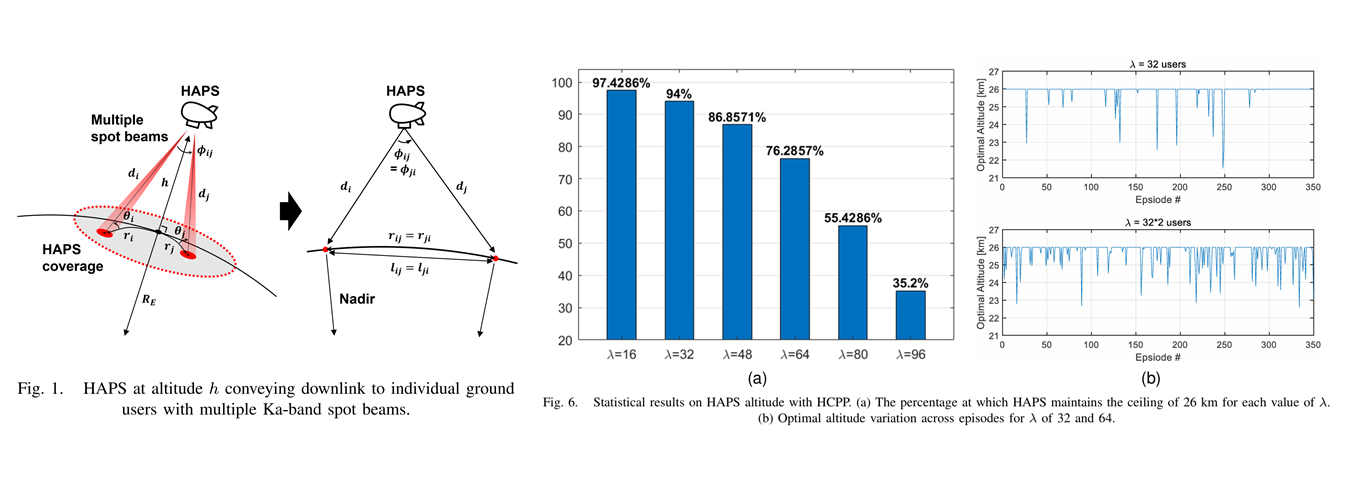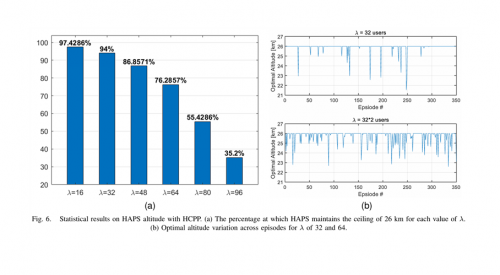Major research outcome
- Ph.D. Candidate Geewon Jang and Prof. Jihwan Choi: Performance analysis of HAPS-based non-terrestrial communication networks
- 관리자 |
- 2025-06-02 13:54:26|
- 41
- 2025-06-02 13:54:26|
High Altitude Platform Stations (HAPSs) are non-terrestrial network nodes that typically operate in the stratosphere, and they have garnered significant attention in next-generation wireless communication networks due to their numerous advantages and diverse application scenarios. Despite extensive research on HAPS, no study has yet identified the optimal operating altitude while considering all relevant propagation losses inherent to non-terrestrial networks. Unlike terrestrial systems, HAPS channels must account for atmospheric absorption and shadowing effects specific to the non-terrestrial environment in their path-loss models and performance analyses.
Recently, Ph.D. candidate Geewon Jang and Prof. Jihwan Choi of the ACAI Lab conducted a comprehensive performance analysis of HAPS downlink networks and presented their findings. Based on communication standard documents, they applied all relevant path-loss components associated with non-terrestrial links and demonstrated that the trade-offs among these losses determine the optimal operational altitude for HAPS. Furthermore, by incorporating a stochastic geometry-based analysis, they illustrated how the optimal altitude shifts under varying conditions and highlighted the importance of establishing long-term target altitudes for HAPS deployments. The research results have been accepted for publication in the prestigious international journal in the field of aerospace engineering, ‘IEEE Transactions on Aerospace and Electronic Systems’ (IF 5.1).

Recently, Ph.D. candidate Geewon Jang and Prof. Jihwan Choi of the ACAI Lab conducted a comprehensive performance analysis of HAPS downlink networks and presented their findings. Based on communication standard documents, they applied all relevant path-loss components associated with non-terrestrial links and demonstrated that the trade-offs among these losses determine the optimal operational altitude for HAPS. Furthermore, by incorporating a stochastic geometry-based analysis, they illustrated how the optimal altitude shifts under varying conditions and highlighted the importance of establishing long-term target altitudes for HAPS deployments. The research results have been accepted for publication in the prestigious international journal in the field of aerospace engineering, ‘IEEE Transactions on Aerospace and Electronic Systems’ (IF 5.1).

| Attach File |
|---|


